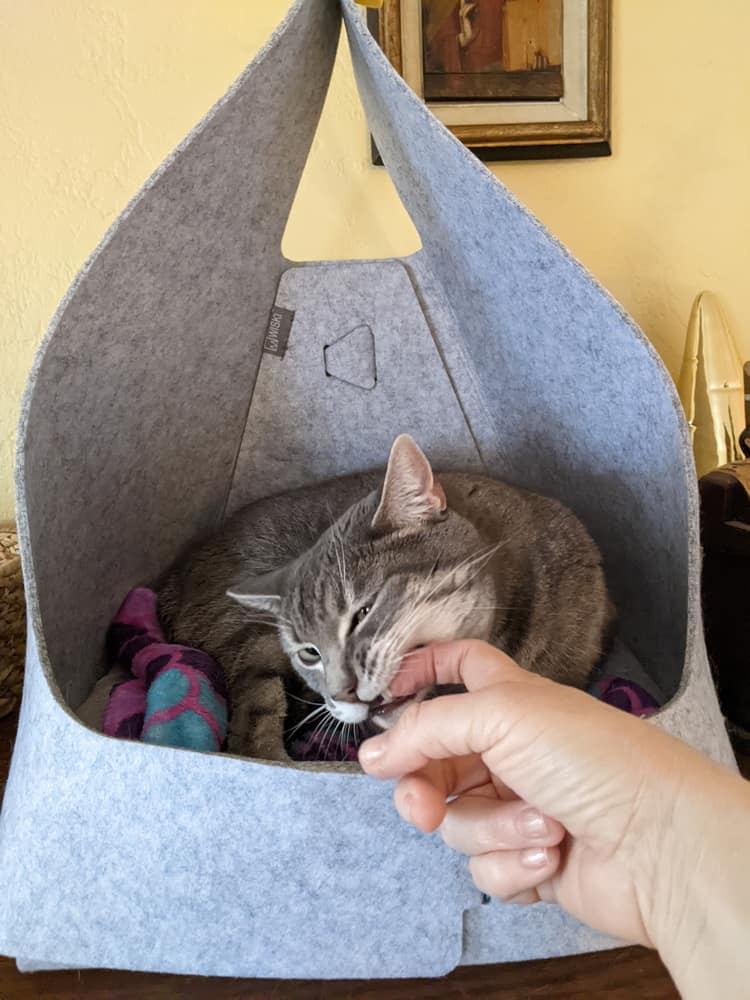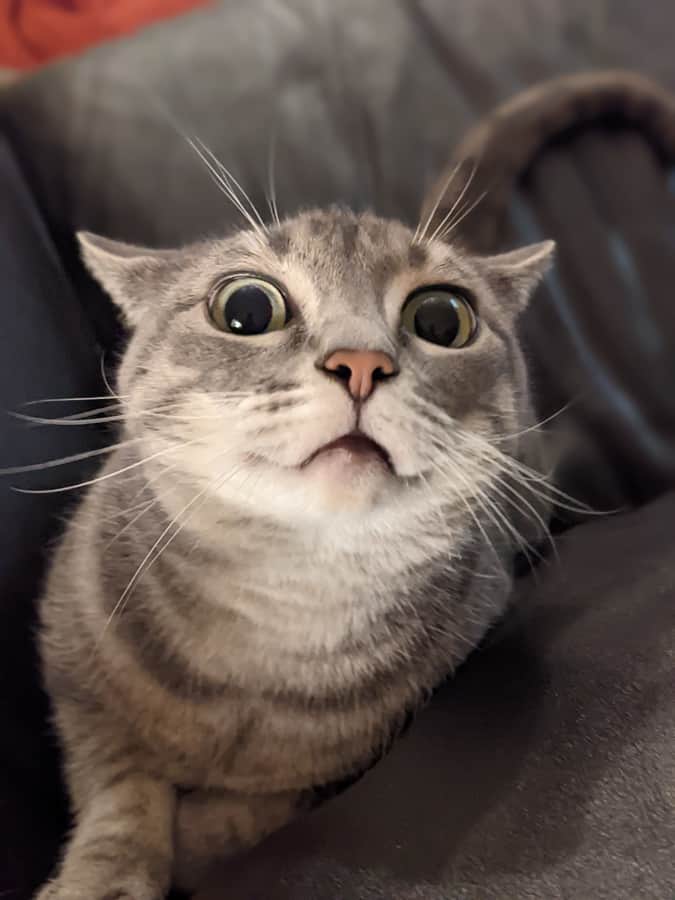Cats can be incredibly affectionate pets. Despite their reputation, most cats are pretty social and crave time and attention from their owners.
There are times, however, when your cat just simply isn’t in the mood to be pet or interacted with. For the well-being of your pet, it’s important to recognize when your cat is displaying irritation at your actions and to learn to give your cat space when needed.
Read your cat’s body language
The first signs of a cat being annoyed by your will show up in the tail and the ears. A relaxed happy cat will most have a still tail and the ears will be upright. A tense cat will push back and start to flatten their ears.
The cat’s tail will start swishing back and forth. A twitching or swishing tail is a common sign of feline irritation.
A cat that doesn’t want to be held, or pet, will start to show these early signs of being upset. If you notice these early signs, you should stop what you’re doing and give your cat some space.
As the cat’s anger builds, the cat will start tense up their body. If you continue to hold a cat that doesn’t want to be held, for example, you will notice that the cat will stiffen their body and start to push away from you.
If the irritation continues, your cat may start to emit a very low growl. This is a warning sign that your cat will next proceed to using their claws and teeth to extract themselves from the situation.

An angry cat may swat with its paw, either with claws extended or retracted, at this point. Or your cat may decide to sink their teeth into your skin to get you to stop the behavior that is making them uncomfortable.
Once freed from the situation, an angry cat will run off. Cats are masters of avoiding conflict, and they will often choose to leave a situation that is causing them stress or discomfort.
Signs that your cat is upset or angry
Hissing
A hissing cat is undoubtedly feeling threatened or angry. This sound is a warning to back off and give the cat space.
Hissing is also a way for the cat to show you their sharp teeth. It’s a way for the cat to say, “hey, if you keep bothering me, I am going to use these teeth to bite you.

Growling
A low growl is another clear sign of feline displeasure. If your cat is growling, it is best to give them some space and allow them to calm down.
Yowling
Yowling is a loud, drawn-out vocalization that cats use to express anger or distress. This sound often indicates that a cat is feeling particularly threatened or uncomfortable.
Dilated pupils
Wide, dilated pupils can be a sign of arousal, fear, or anger in cats. When accompanied by other signs of agitation, it is likely that your cat is feeling angry.

Tail swishing or puffed
A twitching or swishing tail is a common sign of feline irritation. If a cat’s tail is puffed up, it is even more indicative of anger or fear, as the cat is trying to make itself look bigger to ward off a perceived threat.
Ears pinned back
When a cat’s ears are flattened against its head, it may be feeling agitated or scared. This is a clear warning sign that the cat is unhappy and may become aggressive if pushed further.
Whiskers pulled back
When a cat is angry, their whiskers may be pulled back towards the face, making them appear more flat against their cheeks.
Arched back
An angry or scared cat will often arch their back and puff up their fur to appear larger and more intimidating. This posture is a defensive mechanism and indicates that your cat is feeling threatened or uncomfortable.

Ongoing anger can create behavioral issues in cats
A one off situation when you inadvertently made your cat upset isn’t likely to result in your cat acting out. However, if you persistently create an uncomfortable home environment for your cat, you may start to see the cat exhibit outwards signs that they are unhappy.
Here are some ways cats can act out if they are unhappy:
Litter box avoidance
In some cases, cats may express their anger by urinating or defecating outside their litter box. This behavior can be a sign that your cat is unhappy with its environment, is feeling stressed, or is trying to assert dominance.
Over-grooming
Cats groom themselves as a way to maintain cleanliness, but excessive grooming can be a sign of stress or anger. If your cat is over-grooming to the point of creating bald spots or skin irritation, they may be feeling upset or anxious.
Destructive behavior
An angry cat may engage in destructive behavior, such as scratching furniture or knocking items off shelves. This is often a sign of pent-up frustration or an attempt to communicate dissatisfaction.
What to do if your cat is angry or upset
If you see your cat exhibiting behavior that suggest they are upset or stressed, try to create a calmer environment for them so they can feel safe and comfortable.
When interacting with an angry cat, use a calm, gentle tone of voice. This can help to soothe the cat and reduce its fear or aggression.
The most important thing to do when your cat is angry is to give them space. Do not try to comfort or touch your cat, as this may only escalate the situation and result in injury to yourself or your pet.
Make sure you limit your interactions with the cat only to the amount of time they seem to be comfortable with. Provide your cat with plenty of secluded space they can retreat to when needed.
If you have children or other pets in your household, make sure your cat has plenty of high up perches where they can go for some quiet time.
If your cat is consistently angry or hostile, you should consult with a veterinary. There may be an underlying health issue that is triggering your cat’s behavior. An undiagnosed injury can also cause your cat to lash out.
Respecting the limits of your cat is essential for nurturing a healthy and happy cat. By giving your cat the space and calm environment they need, you will also strengthen the bond your cat has with you. Cats are happiest when they trust and feel safe with their caregivers.
Read next: What a Cat’s Slow Blink Means
References
Houpt, K. A. (2018). Domestic animal behavior for veterinarians and animal scientists. John Wiley & Sons.
Lowe, S. E., & Bradshaw, J. W. (2002). Responses of pet cats to being held by an unfamiliar person, from weaning to three years of age. Anthrozoös, 15(1), 69-79. https://doi.org/10.2752/089279302786992702






